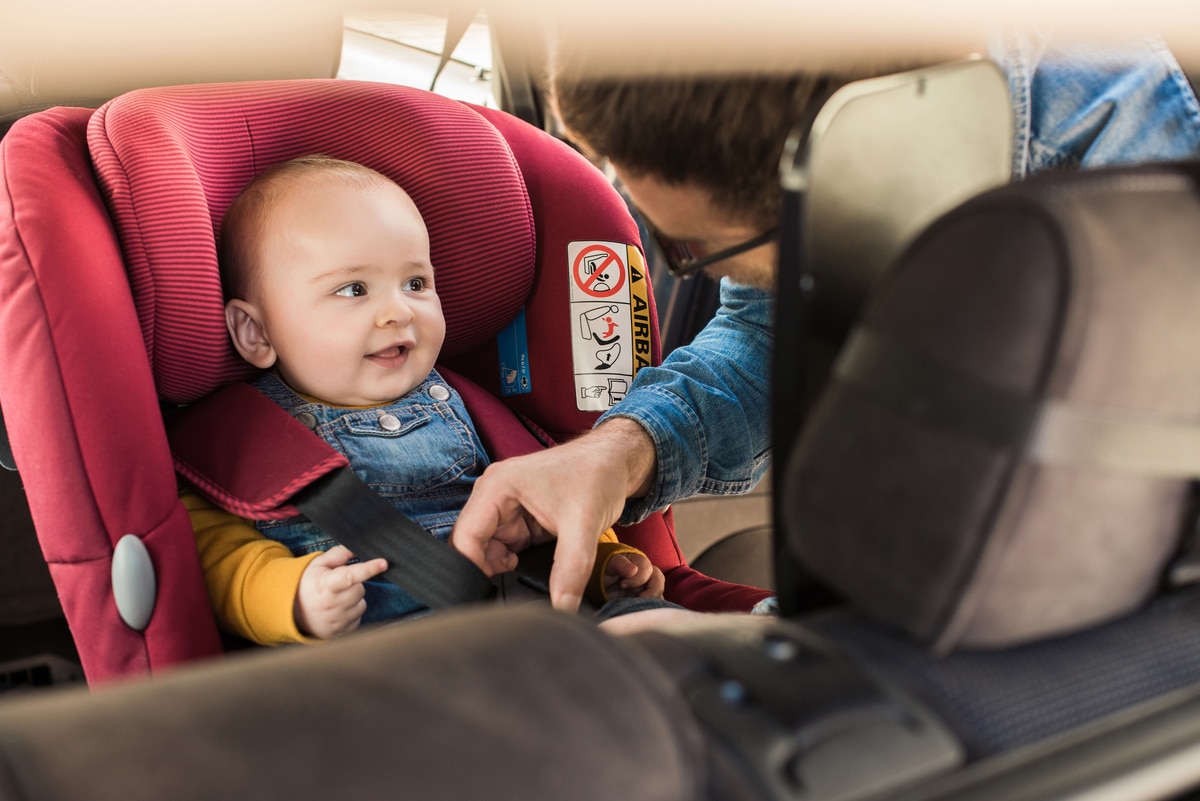Baby Head support, yes you heard it right have you ever wondered how important it is to support your baby head. If not then you should know proper head support is needed for your newborn baby for the initial few months of their life. As it prevents neck injuries, and brain damage and helps to keep the baby stable to make them easier to hold on to. Although you may know that babies just have very limited control over their movement at the initials.
If you have noted when your baby is put in a car seats their head tends to wobble and bobble as their neck mussels are under development which supports their head up and thus, they can’t control it at that time. So we need to support babies’ heads at the initial with proper care and support. Although worry, not car seat manufacturers are aware that a baby’s spine is under development so they make car seats in such a design that supports the baby’s head. In this blog post, we will tell you how to take proper care of the baby’s head and for how long to keep the baby’s head support.
How to Support Baby Head in Car
It’s very important for babies’ heads to remain upright in the car, at least until they can support their own. This also doesn’t mean that head needs to be stationary, it may shift to either side. but should not node in forwarding direction. A baby has very tiny airways which can get blocked if their head goes forward. So they require protection for many months to make sure their airway stays open, and the same way car seat manufacturers also have taken into note as every rear-facing car seat has some or other way to recline it. And also they have an indicator on the car seats which indicates the proper amount of recline which helps in preventing blockage of the airway of a baby by forwarding head flopping.
Also, you should take care while installing the car seat that it is installed perfectly and properly. If you are having any problem in doing so make sure to contact any certified technician who would do it in the right manner.
When to remove head support from a car seat?
Most car seats have built-in support that can be adjusted as your child grows. Head support is important for keeping your child’s head and spine in alignment, and for providing protection in the event of a collision.
Once your baby can sit up unaided, usually around 4 to 8 months old. When they no longer need the support, you can remove the head support. Although you might need to use head support for a little longer if your baby has weak head control or falls asleep a lot in the car seat. Yet it is just upon you that until when is your baby comfortable in the car seat head support.
As suggested by pediatrics for infants and toddlers, it is recommended to keep the head support in the car seat at all times. For older children, you may remove the head support when they are able to sit upright unassisted. However, you should always consult your child’s pediatrician before making any changes to their car seat set-up.
Few Tips for using a Head Support in a Car Seat:
- Make sure that the head support is properly installed in the car seat according to the manufacturer’s instructions.
- Position the head support so that it provides adequate support for your child’s head and neck and is properly tightened to the car seat.
- Do not allow your child to play with or chew on the head support.
- Never use head support that does not fit your child’s car seat properly.
- Inspect head support regularly to make sure that it is in good condition and not damaged.
- Always use head support with your car seat for your child’s safety.
- Never put anything on top of the head support or in between the head support and your child’s head.
- Never use a car seat with head support that is not adjustable.
- Always keep the head support in the car seat when not in use so that it is ready to be used at a moment’s notice.
- Always supervise your child when they are using the head support and also never leave him unattended in the car seats.
- Always keep the head support clean and free of any objects that could cause injury to your child.
Benefits of Using Head Support in Car Seat:
Head supports are important for several reasons. As mainly they help keep your baby’s head from flopping around, which can lead to neck injuries. They provide support for your baby’s head and neck when you are driving over bumps or taking turns. Also if you have not noted they can help keep your baby’s head warm in cold weather.
Also head support in car seats is beneficial because it provides extra comfort and support for your head and neck. It can also help to prevent whiplash in the event of a car accident. Additionally, head support can help to keep your head and spine in alignment, which can reduce pain and discomfort during long car rides. Most head supports are adjustable, so you can find the perfect fit for your needs. Typically, you should keep head support in your car seat for as long as you are using the seat. Once you no longer need the head support, you can remove it and store it away.
What are some signs that my child’s head support needs to be replaced?
Some signs that your child’s head support may need to be replaced include:
- The head support is damaged or torn so make sure to
- – The head support is no longer securely attached to the side of the car seat
- – The head support is no longer providing adequate support for your child’s head and neck
If you have any concerns about the condition of your child’s head support, consult the car seat manufacturer’s instructions for guidance on when to replace the head support.
Why does my baby’s head fall forward in a car seat?
There are a few reasons why your baby’s head might fall forward in a car seat. One possibility is that the car seat is not properly adjusted for your baby’s height. Another possibility is that your baby has a low muscle tone in their neck, which can cause their head to fall forward. you can try to increase muscle tone by doing some simple exercises with your babies such as pulling their chin up or gently massaging their neck and shoulders. Finally, make sure that the straps on the car seat are tight enough so that your baby’s head doesn’t have a chance to fall forward. If you’re still having trouble, consult with a pediatrician or certified child passenger safety technician.
Is a newborn insert necessary?
A newborn insert is not strictly necessary in a car seat, but it can provide additional comfort and support for your baby. If you decide to use one, be sure to purchase one that is specifically designed for your car seat model and follow the manufacturer’s instructions for installation and use.
Using an infant insert may offer several benefits. First and foremost, it helps to keep your baby secure and comfortable in their car seat. It also helps to protect fragile necks and heads during any bumps or jostling that may occur while driving. Also, an infant insert can help to improve the fit of your car seat, for the little one. Additionally, always keep your baby properly restrained in the car seat according to the manufacturer’s instructions.
What happens if your baby’s head is not supported?
If your baby’s head is not adequately supported, they may develop issues with their neck and spine. This can lead to problems such as airway blockage and even with their posture and movement as they grow older. Additionally, not supporting your baby’s head can put unnecessary strain on their developing skull which could result in misshapen head growth. Ultimately, it is very important to make sure that your baby’s head is always supported, especially in the first few months of life when their skulls are still very soft and vulnerable and hence need to be supported with extra care.
The Last Word
Although it is important to keep your child in a car seat for as long as possible, the length of time you should keep head support in is different for every child. Every child’s skull and neck are unique, so you will need to pay close attention to how your child adjusts and whether they start slouching without the support. As a general rule, it is best to remove the head support when your child can sit up straight with good posture on their own. Keep an eye on your little one and make sure they stay safe while driving by using our guidelines for the appropriate amount of time to use head support in a car seat.
Although for newborns, most experts recommend keeping the head support in until they are at least six months old. After that, you can start to experiment with taking it out for short periods of time and seeing how your child does. If they start to show signs of discomfort or poor posture, then put the head support back in. As always, if you have any questions or concerns, consult with your pediatrician. Thanks for reading!











